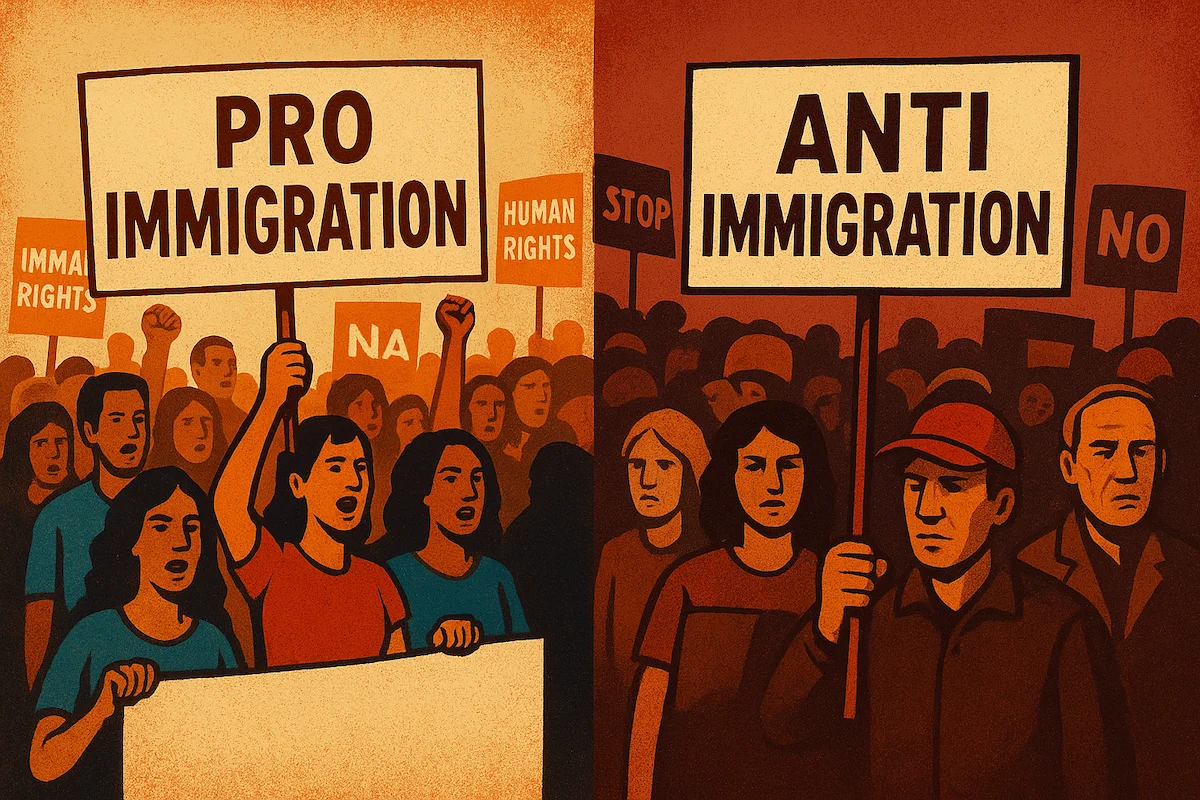GloNews10

Immigration has become one of the most polarizing global issues in 2025. From economic debates to cultural identity, pro- and anti-immigration sentiment continues to influence elections, social movements, and policymaking across continents. As countries wrestle with labor shortages, refugee crises, and security concerns, the global mood reflects a deep divide on how immigration should shape the future.
Supporters of immigration argue that migrant workers are vital for economies. In many advanced nations, immigration helps fill critical roles in sectors like:
Countries such as Canada and Germany have embraced more pro-immigration policies, encouraging skilled migrants to boost innovation and address labor gaps.
Additionally, cultural diversity brought by immigrants contributes to new ideas, stronger communities, and global connections. For example, the tech industry in the U.S. has thrived due to immigrant-led startups and innovations.
At the same time, anti-immigration sentiment is growing in parts of Europe, the U.S., and Asia. Concerns driving opposition include:
Political parties in France, Italy, and Hungary have gained support by promising stricter immigration controls. Similarly, debates in the U.S. highlight the tension between border security and humanitarian responsibilities. Pew Research
The divide between pro- and anti-immigration groups is shaping the global political landscape.
This polarization has led to policy swings, where governments alternate between opening and tightening borders depending on political pressure.
While public opinion may lean against immigration in some nations, economic data tells a different story:
Economists warn that ignoring the economic value of immigration could damage long-term prosperity.
Beyond politics and economics, immigration also represents a humanitarian challenge. Millions of refugees and displaced people seek safety from war, persecution, or climate change. The global mood toward refugees is split:
This tension raises questions about the future of global cooperation on human rights and humanitarian aid.
The global mood on immigration reveals a deep divide: one side views it as a driver of progress, while the other sees it as a threat to stability. With economic needs and humanitarian crises mounting, the debate over pro- and anti-immigration sentiment is set to remain a defining issue of the decade.